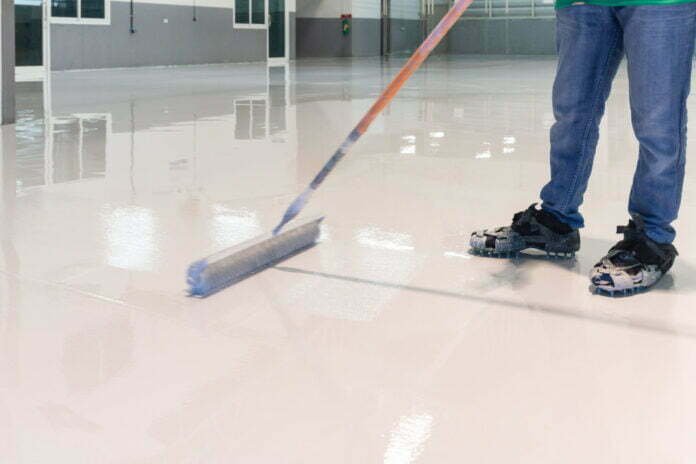Epoxy is an adhesive formed from mixing hardeners, special additives, and resin. This adhesive has many applications, including making floors. Weather conditions affect garage floor epoxy maintenance projects. This guide explores the maintenance of epoxy floors in cold areas.
Ideal Temperature and Humidity for Garage Floor Epoxy Maintenance
Temperature is a key factor when it comes to the maintenance of epoxy floors. The ideal humidity should be below 85% and the temperature should be 4°F or more above the dew point. A room heater with a thermostat can heat the working area and the ingredients.
Humidity is the moisture in the atmosphere. Moisture plays a big role in epoxy maintenance projects. Garage floor epoxy maintenance can be undertaken provided humidity is 85% or less. The ideal humidity should range between 50% to 60%. A hygrometer measures humidity while a thermometer measures temperature.
Understanding Epoxy Curing
Curing refers to the chemical interaction of the adhesive’s ingredients. Cold weather conditions can slow down the curing process. Understanding the stages of a cure can help you make informed decisions.
The Mixing Phase
The mixing of resin, special additives, and hardener happens in this phase. Warm temperatures catalyze the chemical interaction, while cold weather can slow the process.
The Gel Phase
The mixture is now a gel at this point, and it’s ready for application. The gel remains tacky because there’s no more chemical interaction in the gel phase. This tackiness helps form a strong bond when applying the epoxy.
The Solid Phase
The adhesive has now solidified, and chemical interaction can no longer take place. Sanding the adhesive is the only way to achieve mechanical or hydrogen bonding. The mixture is by now cured and should solidify in a few days when kept at room temperature. Curing slows down as temperature decreases. The curing process may be longer in cold areas or even stop.
Challenges of Epoxy Maintenance in Cold Areas
The common challenges of epoxy floor maintenance in cold areas include:
Pumping and Mixing
Epoxy maintenance services use machines to get the correct ratio of ingredients. Both resin and hardener tend to thicken and attach to vertical surfaces. Thickening and clinging to vertical surfaces affect the mixing of ingredients. Low temperatures decrease the exothermic reaction during curing. A compromised curing process weakens the bonding of the end product.
Application
The adhesive thickens like honey when it’s cold. This thickening presents pouring or application challenges. You may end up with uneven coats if the mixture is too thick.
Trapped Air
Air bubbles should expel into the atmosphere when mixing ingredients. Warm temperatures allow air to expel into the atmosphere in warm weather. Cold temperature creates surface tension and traps air bubbles. Trapped air makes the floor produce bubbles and leaves uneven patches behind.
Read Also: Should You Choose Wedding Photography or Videography — Or Both?
Epoxy–filler Blending
It’s difficult to get a perfect epoxy–filler blending ratio when it’s cold. Viscosity refers to the thickness and sticky consistency between liquids and solids. Curing generates a subtle exotherm, reducing viscosity.
Low Productivity
The subtle exotherm generated during curing reduces viscosity. A thick adhesive slows application speed and progress in the long run. Low productivity translates to accomplishing fewer tasks than usual.
Epoxy Floor Maintenance Tips in Cold Weather
The following tips can help you improve epoxy maintenance in cold areas or weather:
Use a Fast Hardener
Fast hardeners are ideal for epoxy projects in cold areas. These hardeners reduce the liquid and gel time, catalyzing the curing process.
Prepare the Working Environment
Epoxy maintenance requires specific temperature and humidity conditions. The ideal room temperature should be between 70°F and 85°F while humidity should be between 50% and 60%.
Consider the Mixing Ratio
The ingredients mixing ratio depends on the following factors:
- The type of hardener used.
- The size of the job.
- The manufacturer’s guidelines.
Hardeners come with instructions written on the back of the cans. Use the correct ratios to avoid compromising the adhesive’s bond.
Identifying a Cold Weather Epoxy Solution
Epoxy flooring solutions are easy to manage, durable, and beautiful. A reputable epoxy floor maintenance service can provide quality services. Do due diligence before hiring a professional garage floor epoxy solution. Online reviews and referrals from friends can also point you in the right direction.



